Note: My previous reviews of this series had incorrect information on the series numbering, and about the relationship of this printing to the first one. That first printing had seven volumes. If Lincoln Square Books reprints all of the series, their edition will have six, because they combined the original Real Dangerous Girl and Real Dangerous Job (which form a single story arc) as Parts I and II of a single novel with the first title. However, they did NOT combine any of the later novels, which all have their original titles; the next two, including this one, were divided into Parts I and II to start with. I apologize to readers for the earlier misleading information; but a late correction is better than no correction!
Having read (and reviewed) the previous volumes in this action adventure series, all of which got high ratings from me, I was glad to follow along with this next installment. Most readers of this book will probably have read the earlier ones –and should have, since this series is one that absolutely needs to be read in order. (This review will contain some spoilers for the preceding book, though not for this one.) Likewise, most readers of this review will most likely have read my takes on the preceding volumes, so will already have a basic idea of Kim’s personality, family situation, and back history.) The main body of this story takes place on one day, mostly in a tense hostage situation, and Part I ends in a cliff-hanger in the very middle of that situation.
 The most obvious difference between the previous installments and this one is that we’re no longer in our familiar upstate New York setting. Landing on her feet at the conclusion of her previous adventure, our rough-edged heroine had wangled herself a job as chief of security for her deceased boss’ erstwhile newly minted partner, Mr. Karsh (whose business practices unfortunately aren’t any more ethical or strictly legal than the late Mr. Falcon’s, though he also aspires to a veneer of legitimacy). In the interim between the two books, his far-flung business enterprises have taken him to L.A. for an extended stay, so he’s re-located Kim and Donnie (I’d say she’s now at least 18, if not 19, and Donnie’s 12-13) there along with him. When our story opens, Kim’s making better money than before; she and Donnie can afford a better apartment, and Karsh’s gotten him into a private school that caters to special-needs kids. She’s thinking that their situation is looking up; but with her luck, it can go south very quickly. And then things get really hairy, when she finds herself, in a Karsh-owned equipment truck, in the middle of a late afternoon traffic jam on an elevated L.A. freeway, in which Donnie’s school bus is also stuck –and shooting and explosions start to happen.
The most obvious difference between the previous installments and this one is that we’re no longer in our familiar upstate New York setting. Landing on her feet at the conclusion of her previous adventure, our rough-edged heroine had wangled herself a job as chief of security for her deceased boss’ erstwhile newly minted partner, Mr. Karsh (whose business practices unfortunately aren’t any more ethical or strictly legal than the late Mr. Falcon’s, though he also aspires to a veneer of legitimacy). In the interim between the two books, his far-flung business enterprises have taken him to L.A. for an extended stay, so he’s re-located Kim and Donnie (I’d say she’s now at least 18, if not 19, and Donnie’s 12-13) there along with him. When our story opens, Kim’s making better money than before; she and Donnie can afford a better apartment, and Karsh’s gotten him into a private school that caters to special-needs kids. She’s thinking that their situation is looking up; but with her luck, it can go south very quickly. And then things get really hairy, when she finds herself, in a Karsh-owned equipment truck, in the middle of a late afternoon traffic jam on an elevated L.A. freeway, in which Donnie’s school bus is also stuck –and shooting and explosions start to happen.
That brings us to another difference, or set of differences, from the previous books. Here, the unity of time and location is much tighter. Events are also, in a sense, more straightforward. True, Kim doesn’t have a clue why a gaggle of heavily armed thugs have set off vehicle explosions that block 50 or 60 cars between them, with no escape, and neither do we as readers; Jeter will disclose their leader’s plan and motivation only very gradually. But figuring out who the enemy is here isn’t going to be a problem; they’re toting their assault rifles quite openly. There are also a number of scenes and events here to which Kim isn’t privy at the time. Given that she’s our first-person narrator, that’s a challenge to pull off, but Jeter does it successfully. He’s already used the technique, in previous books, of her describing a scene the way she imagines it went. (But as Kim says, “The thing about my imagination, though –I’m not usually wrong about whatever I come up with. Kind of a gift, that way.” :-) )
Here, he just has to use it a great deal more. Finally, there’s not a lot of moral ambiguity or grey areas in this tale; anybody who’s not morally brain-dead can recognize that the perpetrators aren’t doing good things, and Kim doesn’t need to agonize over whether it’s right to try to mess up their plans and hopefully get Donnie to safety -and herself and maybe others as well, if she’s lucky. That’s pretty much a given. The real question is whether she can rescue anybody. (The cover art here is highly misleading; Kim never has a pistol in her hand in this book.) Her treasured .357 is in her shoulder bag in her boss’ car (long story), and the head thug quickly relieved her of the Ladysmith in her thigh holster. So she’s unarmed, and not blessed with a physique that gives her much advantage in hand-to-hand combat, nor martial arts skills. But she does have guts, smarts, and determination; and her colleague Elton (whom we met in the previous book), who’s with her in the truck, has the same qualities.
The action-adventure aspect of the story is more prominent here than in the previous books (though Kim herself gets to display her chops only towards the end –she’ll more than make up for that, however!), and is presented with a good deal of tension, suspense, and excitement, punctuated by explosions and mayhem. (Hollywood disdains to adapt indie or small-press books as films; that’s their loss in this case, because the narrative has a highly cinematic quality. It would be tailor-made for adaptation as an action film, and would probably be very popular at the box office.) Strong characterization is an asset, as always in this series; Donnie in particular comes into his own here (and we actually learn what his medical condition is; it’s esophageal atresia, and compounded in his case with complications from surgical infection, it’s life-threatening). And don’t sell him short in a crisis, either; yeah, his legs are useless, but his big sister isn’t the only sibling in that family who’s got fighting spirit…. Bad language is restrained (no obscenity, and not much religious profanity), and there’s no sexual content; Jeter’s prose is vivid, and the narrative is fast-paced.
Continuity/editing issues, as in the previous book, are the one significant flaw here. An important plot point results from a scuffle that supposedly took place earlier; but in the earlier part of the book that describes that encounter, there was clearly no scuffle at all. At one point, Kim refers to being aware of something she actually couldn’t have known until later. Most glaringly, a character who’s shot dead with a close-range pistol bullet between the eyes appears two pages later, walking, talking and menacing people. In fairness, I had to deduct a star for those issues, but they didn’t keep me from really liking the book. (All of them could be fixed with fairly slight editing.) For series fans, it’s a must-read; and I think most fans of clean action-adventure, especially those who appreciate a protagonist from the distaff side, would greatly like this series if they’d try it.
Author: K. W. Jeter
Publisher: Lincoln Square Books; available through Amazon, both for Kindle and as a printed book
A version of this review previously appeared on Goodreads.
 There are times when I end up asking myself deep philosophical questions, like “Why am I doing this?” or “Isn’t there something else on which I can use my time?” In this case it, was “Who thought a sequel to the painful exercise which was Ebony Hustle was necessary?” To be fair though, this is an improvement. A half-star might be pushing it, to the point I did wonder about introducing a ★¾ rating. Or possibly a ★ and 11/16. It’s not good, to be clear. But it’s definitely less aggressively incompetent, with some of the most annoying rough edges smoothed down. For example, the audio this time mostly (although not entirely) lives around the same level, and there’s only one Facetime scene.
There are times when I end up asking myself deep philosophical questions, like “Why am I doing this?” or “Isn’t there something else on which I can use my time?” In this case it, was “Who thought a sequel to the painful exercise which was Ebony Hustle was necessary?” To be fair though, this is an improvement. A half-star might be pushing it, to the point I did wonder about introducing a ★¾ rating. Or possibly a ★ and 11/16. It’s not good, to be clear. But it’s definitely less aggressively incompetent, with some of the most annoying rough edges smoothed down. For example, the audio this time mostly (although not entirely) lives around the same level, and there’s only one Facetime scene.




 I was intrigued by this, mostly due to the presence of Penn, an Australian champion in karate who appeared (albeit, in minor roles) in a number of Hong Kong action movies of the nineties. Her blonde hair made her stand out, as one of the few gwailo women to be seen in the genre. This TV movie, intended as a pilot for a series appears to have been her swing at stardom in the West. After it fell agonizingly short, she seems to have given up on acting entirely. She now appears to be the CEO of Signal 8 Security, a private security company back in Hong Kong – the celebrity clients listed on the company’s website appear to include Jackie Chan, ironically enough.
I was intrigued by this, mostly due to the presence of Penn, an Australian champion in karate who appeared (albeit, in minor roles) in a number of Hong Kong action movies of the nineties. Her blonde hair made her stand out, as one of the few gwailo women to be seen in the genre. This TV movie, intended as a pilot for a series appears to have been her swing at stardom in the West. After it fell agonizingly short, she seems to have given up on acting entirely. She now appears to be the CEO of Signal 8 Security, a private security company back in Hong Kong – the celebrity clients listed on the company’s website appear to include Jackie Chan, ironically enough.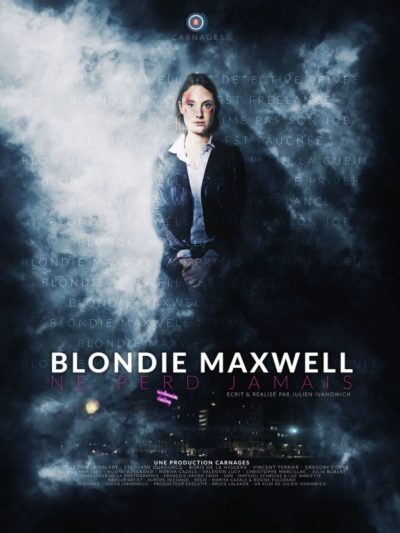 This French film takes place a little way into the future, though society has undergone radical changes. Law enforcement is now privatized, with investigations contracted out to private investigators, who have to balance their costs in order to turn a profit on the cases they accept. One such PI is Blondie Maxwell (Langlart) – and to get the obvious out of the way first, no, she is
This French film takes place a little way into the future, though society has undergone radical changes. Law enforcement is now privatized, with investigations contracted out to private investigators, who have to balance their costs in order to turn a profit on the cases they accept. One such PI is Blondie Maxwell (Langlart) – and to get the obvious out of the way first, no, she is 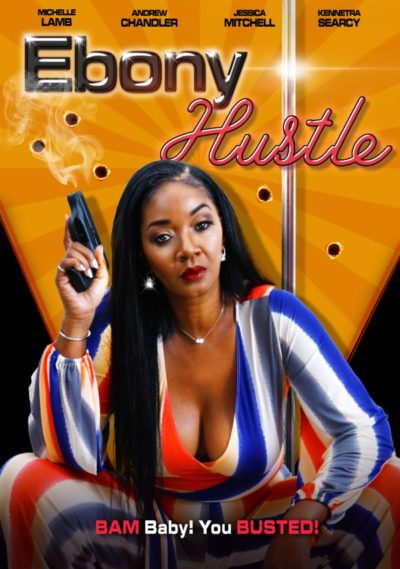 When the best part of a movie is the opening credits, we have a problem. That’s the case here, with an 007-influenced montage that feels as if it cost more than the entire rest of the film to put together. However, by that point, the movie was already on thin ice, because the volume of the music was roughly three times that of dialogue in the pre-credit scene. Lunging repeatedly for the button on the remote is always a red flag for any indie movie, and proved accurate here. The same goes for the gratuitous name-checking of much better black heroines, such as
When the best part of a movie is the opening credits, we have a problem. That’s the case here, with an 007-influenced montage that feels as if it cost more than the entire rest of the film to put together. However, by that point, the movie was already on thin ice, because the volume of the music was roughly three times that of dialogue in the pre-credit scene. Lunging repeatedly for the button on the remote is always a red flag for any indie movie, and proved accurate here. The same goes for the gratuitous name-checking of much better black heroines, such as 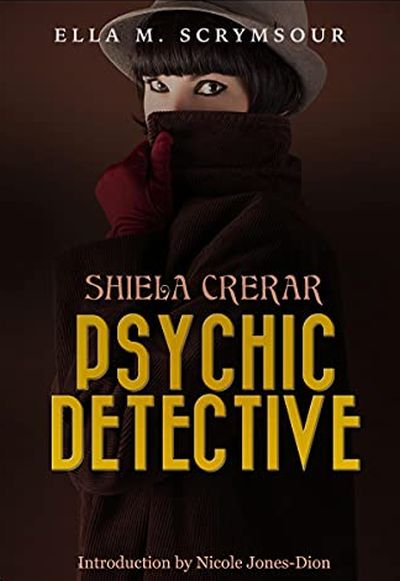 Orphaned as a child, Shiela Crerar was happily raised by an apparently bachelor uncle, a Highland laird with a lot of lineage but not a lot of money. The Sight ran in the family; both she and Uncle John were strongly psychic (her gift –or curse– as she’ll discover early on, allows her to see ghosts, something most people can’t), and she shared in his interest in and study of the paranormal. She’s a kind-hearted, frank and down-to-earth young woman who loves nature and likes to read; she’s also one with considerable determination and a strong will.
Orphaned as a child, Shiela Crerar was happily raised by an apparently bachelor uncle, a Highland laird with a lot of lineage but not a lot of money. The Sight ran in the family; both she and Uncle John were strongly psychic (her gift –or curse– as she’ll discover early on, allows her to see ghosts, something most people can’t), and she shared in his interest in and study of the paranormal. She’s a kind-hearted, frank and down-to-earth young woman who loves nature and likes to read; she’s also one with considerable determination and a strong will. Within ten seconds of Chris having entered the room when this was on, she asked, “Are you watching Moonlighting?” No, I wasn’t – but it’s certainly a valid question. Just a couple of years earlier, Shepherd had finished off a run playing a private eye alongside Bruce Wills on that highly successful show. And here she is, again playing a private investigator on television, with a fondness for cracking wise and showing off her legs. What
Within ten seconds of Chris having entered the room when this was on, she asked, “Are you watching Moonlighting?” No, I wasn’t – but it’s certainly a valid question. Just a couple of years earlier, Shepherd had finished off a run playing a private eye alongside Bruce Wills on that highly successful show. And here she is, again playing a private investigator on television, with a fondness for cracking wise and showing off her legs. What  The most obvious difference between the previous installments and this one is that we’re no longer in our familiar upstate New York setting. Landing on her feet at the conclusion of her previous adventure, our rough-edged heroine had wangled herself a job as chief of security for her deceased boss’ erstwhile newly minted partner, Mr. Karsh (whose business practices unfortunately aren’t any more ethical or strictly legal than the late Mr. Falcon’s, though he also aspires to a veneer of legitimacy). In the interim between the two books, his far-flung business enterprises have taken him to L.A. for an extended stay, so he’s re-located Kim and Donnie (I’d say she’s now at least 18, if not 19, and Donnie’s 12-13) there along with him. When our story opens, Kim’s making better money than before; she and Donnie can afford a better apartment, and Karsh’s gotten him into a private school that caters to special-needs kids. She’s thinking that their situation is looking up; but with her luck, it can go south very quickly. And then things get really hairy, when she finds herself, in a Karsh-owned equipment truck, in the middle of a late afternoon traffic jam on an elevated L.A. freeway, in which Donnie’s school bus is also stuck –and shooting and explosions start to happen.
The most obvious difference between the previous installments and this one is that we’re no longer in our familiar upstate New York setting. Landing on her feet at the conclusion of her previous adventure, our rough-edged heroine had wangled herself a job as chief of security for her deceased boss’ erstwhile newly minted partner, Mr. Karsh (whose business practices unfortunately aren’t any more ethical or strictly legal than the late Mr. Falcon’s, though he also aspires to a veneer of legitimacy). In the interim between the two books, his far-flung business enterprises have taken him to L.A. for an extended stay, so he’s re-located Kim and Donnie (I’d say she’s now at least 18, if not 19, and Donnie’s 12-13) there along with him. When our story opens, Kim’s making better money than before; she and Donnie can afford a better apartment, and Karsh’s gotten him into a private school that caters to special-needs kids. She’s thinking that their situation is looking up; but with her luck, it can go south very quickly. And then things get really hairy, when she finds herself, in a Karsh-owned equipment truck, in the middle of a late afternoon traffic jam on an elevated L.A. freeway, in which Donnie’s school bus is also stuck –and shooting and explosions start to happen.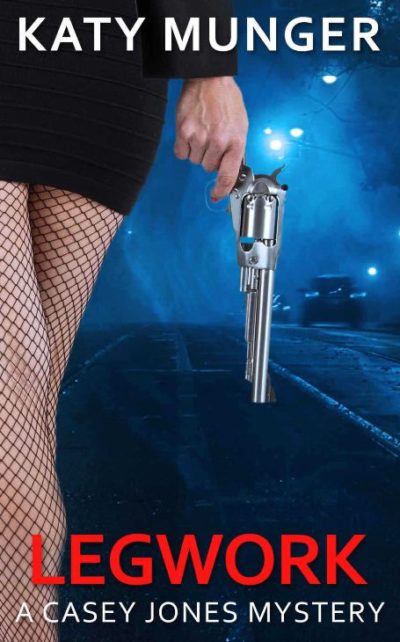 While omnibus editions of series are often a good way to pick up a large volume of content for a discounted price, they do have their downside. Especially for someone like me, who is basically bloody-minded and regards the dreaded Did Not Finish as a badge of failure. So even when a book is not that entertaining, I still find myself slogging on: and when there are three volumes in one, its a process which naturally takes that much longer. I think if I’d had just the one story here, I’d perhaps have looked upon this with a kinder eye. Three was tough, not least because the final story was the longest, occupying a solid forty percent of the set, and is also the least entertaining of the trilogy.
While omnibus editions of series are often a good way to pick up a large volume of content for a discounted price, they do have their downside. Especially for someone like me, who is basically bloody-minded and regards the dreaded Did Not Finish as a badge of failure. So even when a book is not that entertaining, I still find myself slogging on: and when there are three volumes in one, its a process which naturally takes that much longer. I think if I’d had just the one story here, I’d perhaps have looked upon this with a kinder eye. Three was tough, not least because the final story was the longest, occupying a solid forty percent of the set, and is also the least entertaining of the trilogy.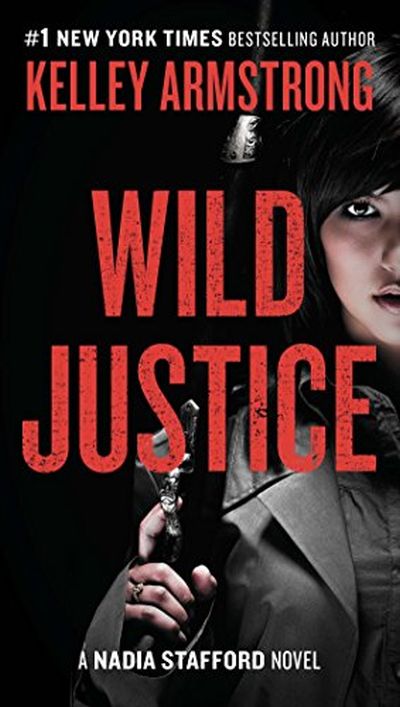 That’s what happened here, about a month ago,with Quinn wanting to move in the direction of engagement and marriage and Nadia not willing to, leading to a messy breakup that left him very hurt and her “feeling like [vulgarism deleted].” :-( On top of that stress, when this book opens, she’s in rural Michigan on a job (of the kind that she doesn’t advertise). That quickly results, though through no fault of her own, in a traumatic event which has her on the point of meltdown. But before long, she’s in for a moral and emotional ordeal which will make her present distresses look relatively mild.
That’s what happened here, about a month ago,with Quinn wanting to move in the direction of engagement and marriage and Nadia not willing to, leading to a messy breakup that left him very hurt and her “feeling like [vulgarism deleted].” :-( On top of that stress, when this book opens, she’s in rural Michigan on a job (of the kind that she doesn’t advertise). That quickly results, though through no fault of her own, in a traumatic event which has her on the point of meltdown. But before long, she’s in for a moral and emotional ordeal which will make her present distresses look relatively mild. Although I first experienced this series through the two sequel novellas, this second installment of Armstrong’s Nadia Stafford trilogy would be best read after the series opener, Exit Strategy. References are made to events in the first book, and to parts of Nadia’s backstory which are detailed there, and these are much more meaningful if you’ve read the first installment. Even more importantly, Armstrong really introduces Nadia’s complex character and current circumstances in depth in the first book; the development she undergoes here presupposes that foundation. (That’s also true for other characters from that book who continue to play roles here; you need the full-orbed picture to understand them.)
Although I first experienced this series through the two sequel novellas, this second installment of Armstrong’s Nadia Stafford trilogy would be best read after the series opener, Exit Strategy. References are made to events in the first book, and to parts of Nadia’s backstory which are detailed there, and these are much more meaningful if you’ve read the first installment. Even more importantly, Armstrong really introduces Nadia’s complex character and current circumstances in depth in the first book; the development she undergoes here presupposes that foundation. (That’s also true for other characters from that book who continue to play roles here; you need the full-orbed picture to understand them.)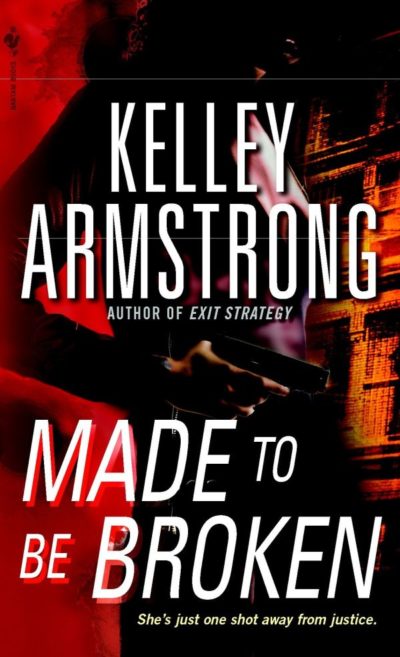 Even with her off-the-books side income, Nadia can’t afford to pay more than a tiny staff at her guest lodge; but out of kindness, she’s given a job as assistant housekeeper to a 17-year-old girl from the nearby small town of White Rock, Sammi Ernst. Sammi’s foul-mouthed, barely literate, and has a chip on her shoulder; the latter isn’t surprising, given her life situation. She’s the out-of-wedlock daughter of Janie Ernst. Both women are widely looked down on in the community –Janie because she’s a drunken, mean-tempered, self-centered deadbeat, and Sammi mainly because she has Janie for an (abusive) mother. Also a single mom herself, Sammi’s not promiscuous like Janie (she had a single affair, with a visiting rich college kid who wasn’t interested in marriage or fatherhood, and left her to bear his unacknowledged daughter alone); and also unlike her own mom, she genuinely loves baby Destiny, and wants to work to support her, rather than making a dead-end career out of welfare dependency as Janie has.
Even with her off-the-books side income, Nadia can’t afford to pay more than a tiny staff at her guest lodge; but out of kindness, she’s given a job as assistant housekeeper to a 17-year-old girl from the nearby small town of White Rock, Sammi Ernst. Sammi’s foul-mouthed, barely literate, and has a chip on her shoulder; the latter isn’t surprising, given her life situation. She’s the out-of-wedlock daughter of Janie Ernst. Both women are widely looked down on in the community –Janie because she’s a drunken, mean-tempered, self-centered deadbeat, and Sammi mainly because she has Janie for an (abusive) mother. Also a single mom herself, Sammi’s not promiscuous like Janie (she had a single affair, with a visiting rich college kid who wasn’t interested in marriage or fatherhood, and left her to bear his unacknowledged daughter alone); and also unlike her own mom, she genuinely loves baby Destiny, and wants to work to support her, rather than making a dead-end career out of welfare dependency as Janie has.